Comtrend PG-9172 Powerline Adapter Review: G.hn Gets Primed for Retail Push
by Ganesh T S on May 3, 2016 8:30 AM EST- Posted in
- Powerline Adapters
- Networking
- Marvell
- G.hn
- HomePlug
- Comtrend
HomePlug and G.hn Go Head to Head
This section presents the benchmark numbers obtained for the four different test cases outlined in the previous section. The Comtrend PG-9172 numbers are graphed in red, while the ZyXEL PLA5405 (representing HomePlug AV2 with MIMO support) numbers are in blue. The main tussle is between these two adapters - they are close in price (USD 77 vs. USD 83) and represent the best possible implementations of the two standards in the evaluated set.
Performance Metrics - TCP Downlink and Uplink
Node A represents the shortest physical distance between the tested nodes. This is a close fight between the HomePlug AV2 and G.hn adapters, with the PG-9172 coming out with a slight lead. Surprisingly, the ZyXEL PLA5206 SISO adapter is better than the PLA5405 in this scenario.
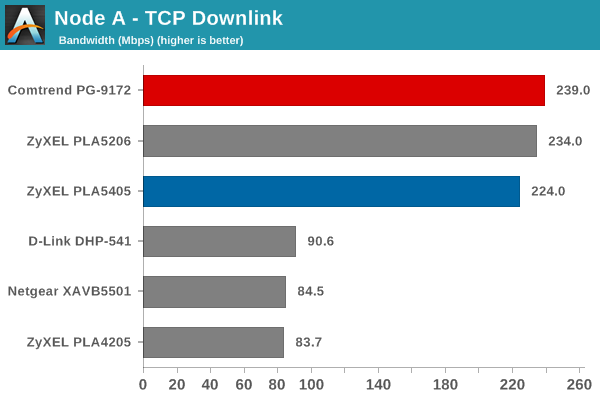
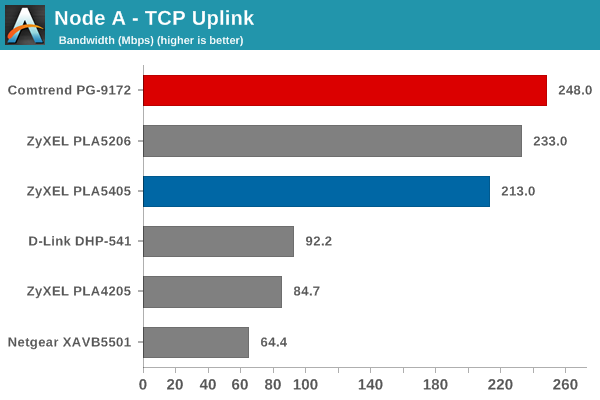
Node B is the garage outlet across the AFCI circuit breaker. The SISO adapter is the surprise winner here, though the G.hn PG-9172 comes a close second. The PLA5405 comes in third, quite a bit behind the G.hn adapter.
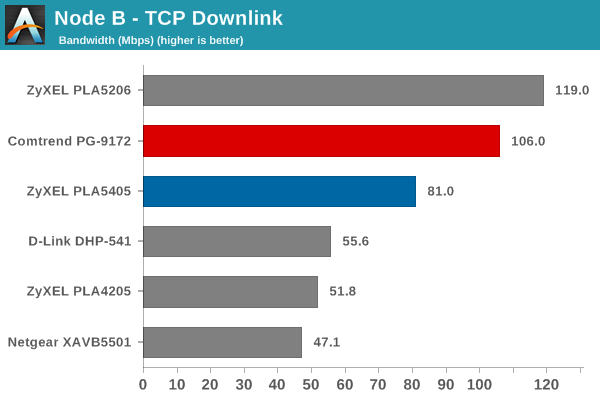

Node C is in the same wall as the garage outlet, and across the circuit breaker again. Here, the Comtrend adapter performs quite well, though it is really hard to choose between the HomePlug AV2 adapters and the G.hn adapter given the small differences in the bandwidth numbers.

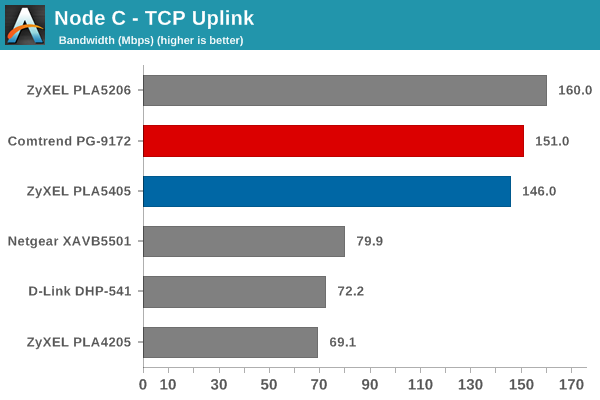
Node D is one of the farther outlets from the master node, and the Comtrend PG-9172 adapter establishes a clear and sizable lead over the HPAV2 adapters.
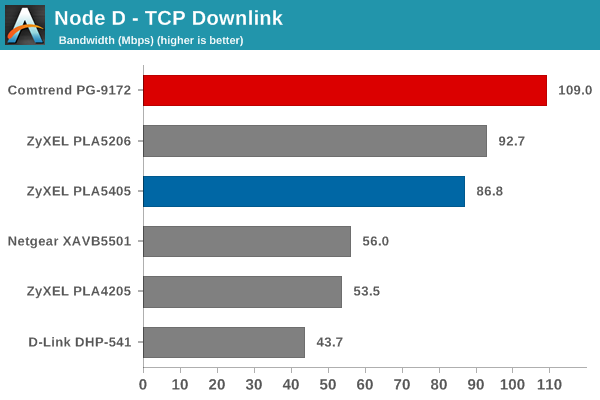
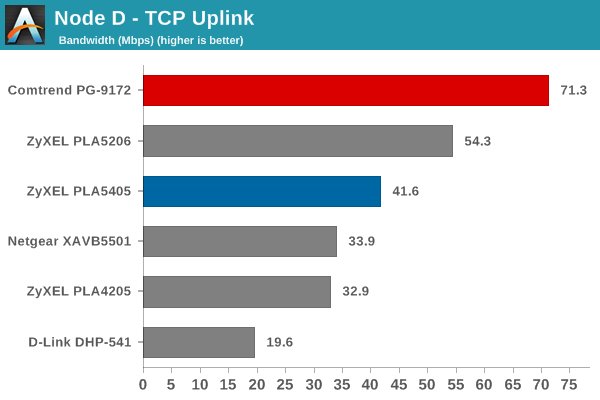
Node E is in the adjacent room, and is one of the closer adapters (similar to Node A). The performance ordering is also similar.
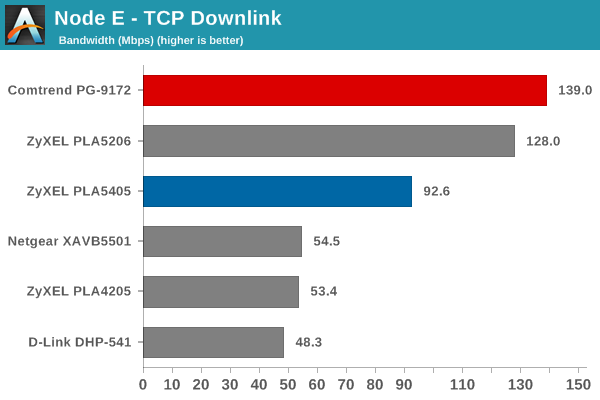

The Comtrend PG-9172 emerges as the clear winner in Node F.
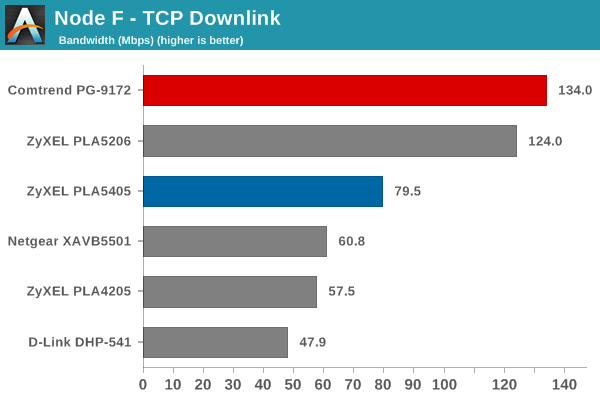
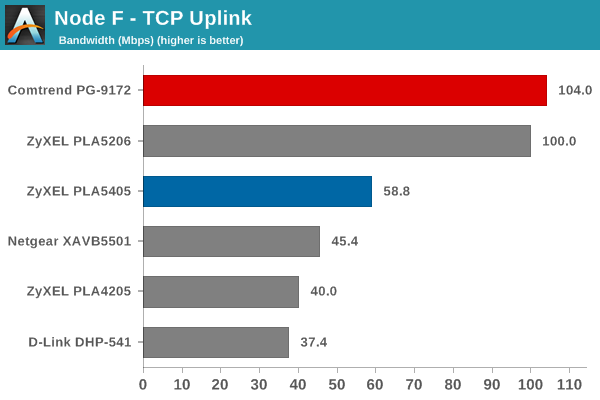
Performance Metrics - UDP Downlink and Uplink
The UDP results across all the nodes are similar in ordering to the TCP results.
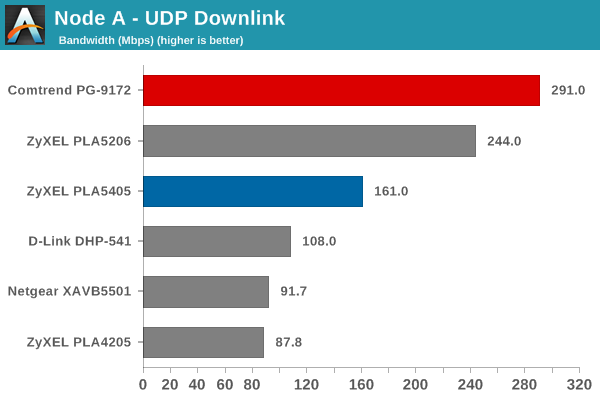
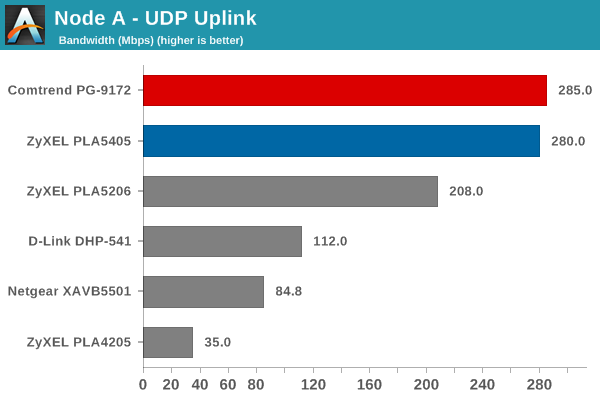
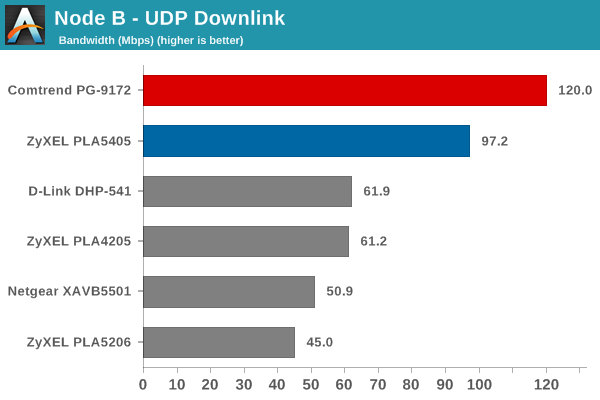
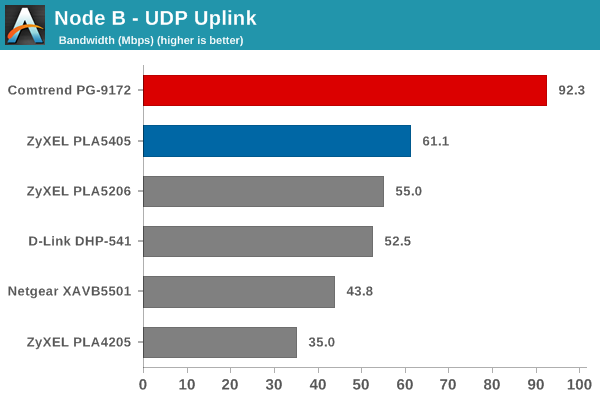
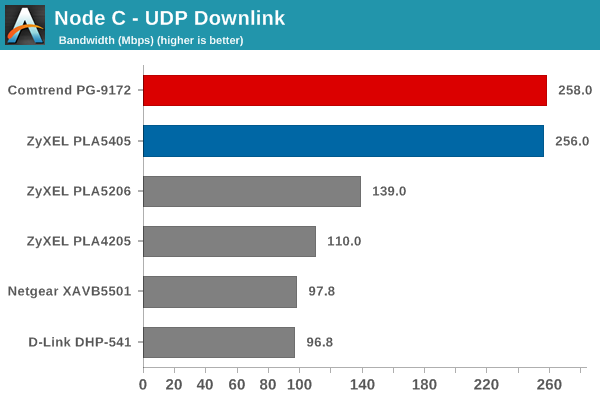
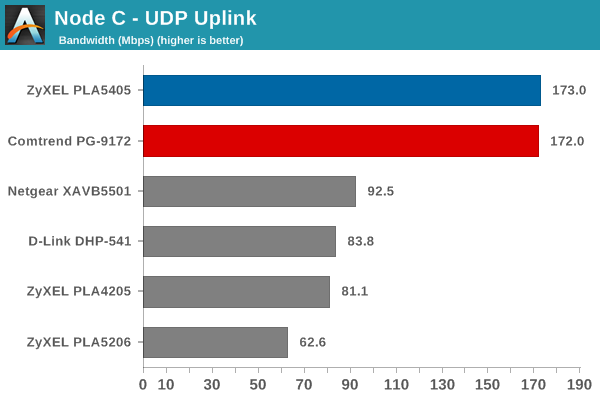
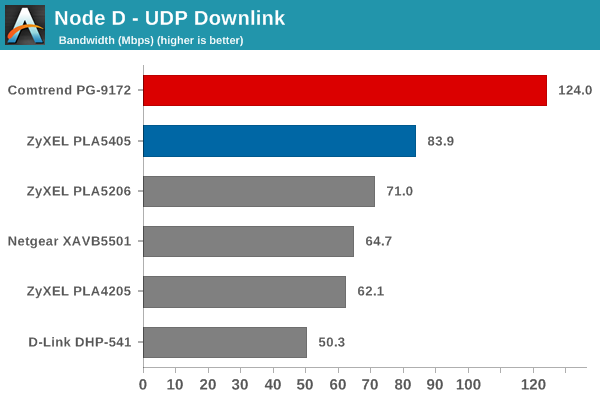
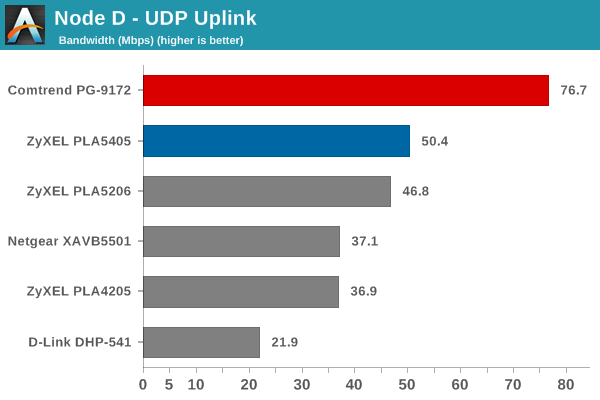

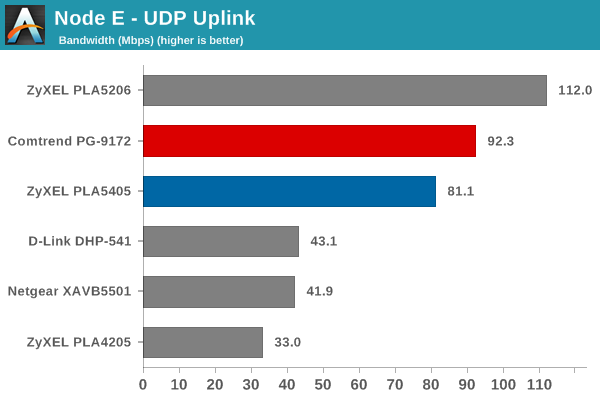
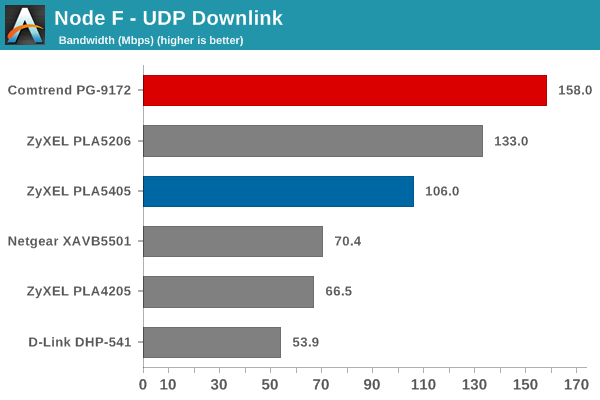
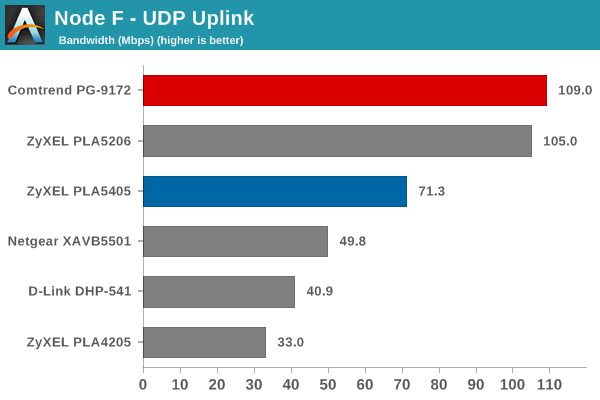
The above results show that the Comtrend PG-9172 G.hn adapter has the best performance in almost all of the tested scenarios.










48 Comments
View All Comments
FATCamaro - Tuesday, May 3, 2016 - link
There are curbside transformers that would completely mangle any data on the line for internet. I'm sure you've seen these buzzing boxes around you?Manch - Wednesday, May 4, 2016 - link
A long time ago there was research into using power lines for data transmission. The idea was to use the em field around the lines to carry the signal. Spurious signals can be picked up like this so why not intentionally use it to send/receive data.That research laid the ground work which turned into this tech.GTVic - Wednesday, May 4, 2016 - link
That is called native encryption.willis936 - Tuesday, May 3, 2016 - link
Phone lines have much better properties for signals. Also every house in America already has a phone line thanks to the Communications Act.cigar3tte - Tuesday, May 3, 2016 - link
But older homes are also that ones that don't have the proper wirings to support powerline networking.Ninhalem - Tuesday, May 3, 2016 - link
I used power line networking to great effect in a home built in 1892. Wiring is dependent on how good the builders were at the time. You can have modern home builders and electricians who shouldn't have been allowed to touch power tools. I find that most construction from the turn of the 20th century and in the 1930's was some of the best construction ever.JoeyJoJo123 - Tuesday, May 3, 2016 - link
What is "Anectdotal Evidence" for $5000, Jerry.Samus - Tuesday, May 3, 2016 - link
LOL, are you denying his claim that pre-WWII construction was superior to modern construction quality?Having a major in architecture and having worked in construction, most modern residential homes are built to last 30-50 years. Materials and quality of construction. The only advantage is the homes are more efficient and have more creature comforts.
In the 20's and 30's, that mentality didn't exist. Things were just built. Well.
Prior to the 70's, the concept of "flipping" also didn't exist. Homes were built and bought to live in forever, much of the time planned to be passed down through the family. These days, almost half of homes are purchased for short term occupancy. aka, 'flipping.'
Buying modern construction is scary, especially if you don't know what to look out for. I'd rather have a 100 year old used and abused home than a 10 year old cookie cutter that was built cheap and has already been through 3 clueless owners.
sor - Wednesday, May 4, 2016 - link
I don't know. I've seen my fair share of knob and tube, insulation that has settled and compacted, moisture barrier issues, rot, insufficient foundations. Most homes that are that old have already had major work done or are piles of crap that either need to be stripped to the studs or they're just run down homes that people put up with because of cost. You can find the occasional well built home, but since building code and inspections were sparse it's a total crap shoot. Looking at the past thinking everything was well built is looking with Rose colored glasses.eek2121 - Wednesday, May 4, 2016 - link
Took the words right out of my mouth.